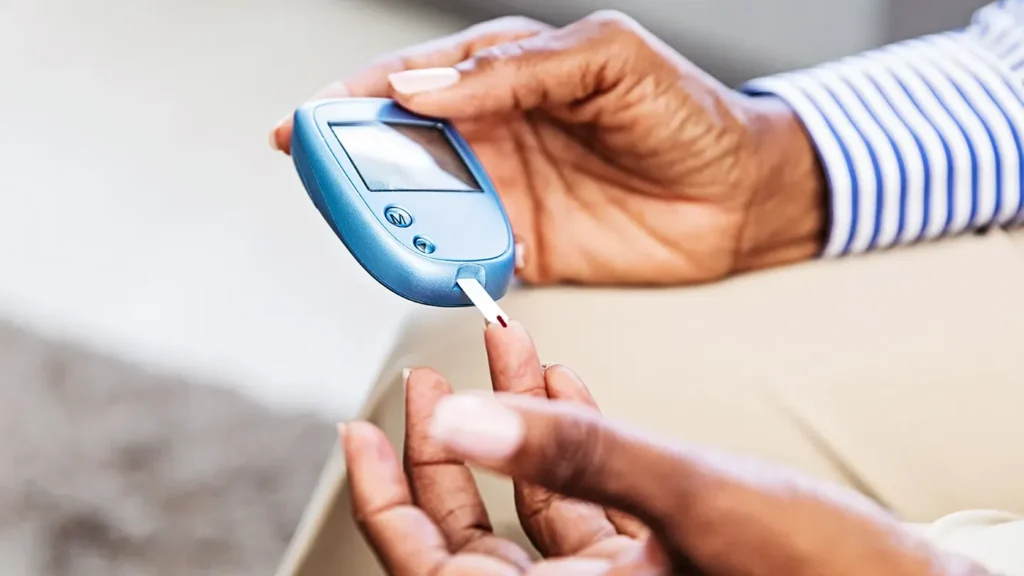Read time : 3 minutes

When living with diabetes, it’s natural to look for practical tools to help keep blood sugar stable. One concept that often comes up is the glycemic index (GI) — a measure of how quickly carbohydrate-containing foods raise your blood sugar compared to pure glucose. But how useful is the GI, really, and what should you know before using it to guide your meals?
Let’s explore why context, balance, and professional guidance matter.
Understanding the Basics: What the Glycemic Index Measures
The GI categorizes foods on a scale from 0 to 100. High-GI foods (70 and above), like white bread, cornflakes, or sugary snacks, can cause rapid spikes in blood glucose. Low-GI foods (55 or below), such as lentils, non-starchy vegetables, and certain fruits, release glucose more gradually, helping to keep blood sugar levels steadier.
Research supports the value of focusing on low-GI choices: a 2007 meta-analysis in The American Journal of Clinical Nutrition found that low-GI diets led to modest but meaningful reductions in HbA1c (a marker of long-term blood sugar control) in people with type 2 diabetes.
Why GI Alone Isn’t Enough
While the GI offers helpful insights, it doesn’t tell the whole story. Here’s why:
- Food combinations matter: A 2011 study in The British Journal of Nutrition showed that pairing high-GI foods like rice with protein-rich chicken or fiber-dense vegetables can significantly lower the meal’s overall blood sugar impact.
- Portion sizes count: The GI measures quality of carbs, not quantity. For example, watermelon has a high GI (72), but because it’s mostly water, a typical serving has a low glycemic load (GL) of about 4 — meaning it’s unlikely to cause a large spike.
- Cooking methods influence GI: Lightly cooked (“al dente”) pasta has a lower GI than overcooked pasta, which is digested faster.
- Nutrition quality still matters: Some foods, like chocolate cake, can technically have a lower GI than white bread but remain high in saturated fats and added sugars, which are harmful for heart and metabolic health.
What You Need to Know About GI and Diabetes Risk
Large-scale studies have linked high-GI diets to increased health risks. For instance, a 2020 study in The Lancet Diabetes & Endocrinology found people consuming the highest-GI diets had about a 40% higher risk of developing type 2 diabetes and a greater risk of cardiovascular disease. Yet, benefits of low-GI diets are not uniform across every population, showing that individual factors matter.
How to Use GI Effectively in Real Life
For people managing diabetes, the GI can be most helpful as part of a bigger strategy, which might include:
- Carbohydrate counting and spacing carbs consistently through the day
- Choosing high-fiber, minimally processed foods
- Balancing carbs with lean protein and healthy fats to slow digestion
- Being mindful of portion sizes and meal timing
It’s equally important to look at the overall quality of your diet — not just the GI of single foods.
Bottom Line: Use the GI as a Guide, Not a Rulebook
The glycemic index is a valuable tool, but it works best when combined with practical, personalized nutrition strategies. Relying on the GI alone can overlook important factors like food combinations, preparation methods, and nutrient content.
If you live with diabetes and want to use the GI to support blood sugar control, consider working with a registered MyHealthCop dietitian. Together, you can create a balanced eating plan that fits your taste, lifestyle, and health goals — focusing on nutrient-dense, low-GI foods and healthy habits that last.
Meet Your Ai Personal Trainer
👉Personalized workouts. Progress tracking. Real results.
MyHealthCop AI is your pocket trainer — always ready, always smart.
Download the App to Take your free Ai health assessment Today [Take Assessment]
RD, LD Julius Sammah
MyHealthCop Certified Dietician